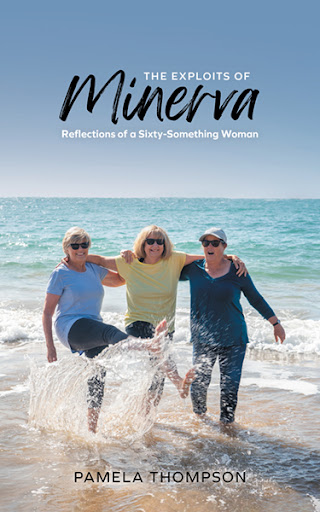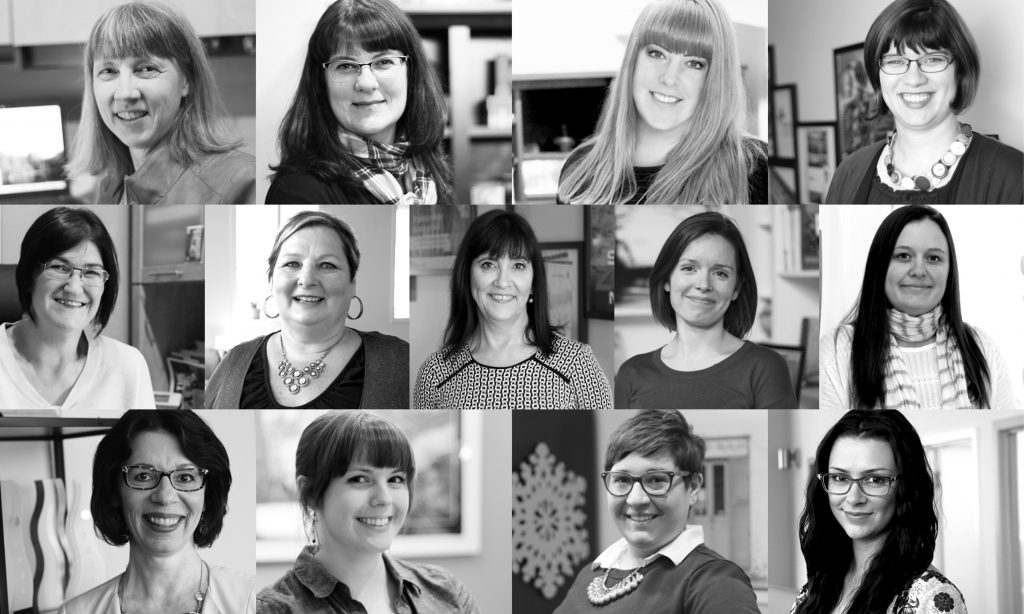
by pam | Apr 25, 2023 | Change, Coping with Change, Life Transitions, Managing Change
“I invite you to join me on the journey back in time where I share key life transitions and lessons learned along the way. It is my hope that you will glean some new insights, better understand yourself and others, and realize you are not alone.”(The Exploits of Minerva: Reflections of a Sixty-Something Woman, p. 4 – https://pamela-thompson.com/books)
Minerva is a playful and sensitive woman in her mid-sixties. She believes that life is an adventure to be lived to the fullest and lives her life according to that mantra. Minerva has experienced numerous life transitions including divorce, finding the love of her life, burnout, living and working on five continents … . She learns valuable lessons and gains support from her women’s circle that she meets with every two weeks. The five women in the Circle have been supporting each other through a variety of life transitions for over two decades. They share their raw and real stories in this part-memoir, part self-help guide.
To help you reflect on your own journey and those of other women in your life, I’ve created a series of questions. They are intended for discussion in a book club. That said you may also use them to learn more about yourself and other women in your life who are similar to the characters in this story.
Potential Book Club Questions:
- What characteristics draw you to Minerva, if any?
- Which experience or experiences of Minerva do you most relate to and why?
- What is Minerva’s main struggle? What does she have to learn to overcome and deal with internally?
- Of the other women in the Women’s Circle, which ones are you drawn to and why?
- Do you feel you have a better understanding of certain life transitions after reading this book? If so, which ones and why?
- Reading “The Exploits of Minerva” has … ?
- Would you recommend this book to others? If yes, who and why?
I welcome your comments and responses to these questions below.

by pam | Jun 13, 2021 | Change, Embracing Change, Life Transitions, Managing Change, Women in Business
The pandemic has been a time of transition for us all.
- You may have transitioned from having a job you loved to being laid off
- You may have transitioned from working in the office to working at home
- You may have experienced a relationship ending due to the stress of working at home together while at the same time looking after young children
- You may have had time to reflect and realize that you want to make a bigger difference in the world
- You may be feeling exhausted and lack clarity on your next steps.
Imagine having practical tools and a proven process to support you to move through transitions in your life and work. One that supports you to move from anxiety and uncertainty toward clarity and fulfillment.
I believe that embracing change is a creative process that opens us up to new possibilities.
My 5-step “Art of Change Process” enables you to identify a change you are struggling with, understand how you respond to change and why, let go of beliefs, emotions and behaviors that are holding you back, envision the change you want to see and create an action plan to move forward.
The “Art of Change Process” can be applied to both your personal and work life and to teams if you are a leader. It enables you to move from resisting change to embracing it.
You may be thinking “I love change. I don’t resist it.” Yet if you peel back the layers and reflect on changes in your life, you may come to realize that many of the changes YOU initiated, so they felt easy to embrace. However, if you reflect on those changes that were imposed on you or initiated by someone else, you may find your experience is different; e.g. being “let go” from a job or having a partner leave you when you weren’t expecting it.
A key concept I have found helpful for myself and for clients has been understanding the difference between a life change and a transition.
William Bridges in his book “Transitions – Making Sense of Life Changes”[1] based on over 30 years of working with people and organizations, noted that a life change is external and situational such as divorce papers or a pink slip; something tangible that we can see. Whereas, a transition is internal and psychological; the internal work we do to reorient and readjust to our new external reality. Many of us do the change, but don’t do what I call the “transition journey” work.
Based on more than 25 years of consulting and coaching with individuals and organizations on 5 continents, the Art of Change framework is a proven model for embracing change whether it involves getting unstuck and moving forward when change is imposed on us, or whether we initiate an organizational or life change.
The Art of Change Framework is a 5-step process that uses the metaphor of life as a dance. The steps are:
- Shine the Light – Explore how you respond to change and why
- Choose Your Dance – Identify the transition you want to work on and where you are on your transition journey
- Feel the Rhythm and Learn the Steps – Commit to embracing change in your body rather than resisting it, and begin doing the work associated with the phase of the transition journey you are in
- Practice, Practice, Practice! – Do the work that includes letting go, identifying lessons learned, envisioning the work or organization of your dreams, taking action, and viewing change as a creative process that opens you up to new possibilities
- Consciously Share Your Dance with the World – Observe the positive changes in yourself, how others respond to you, and the positive impact you have on your family, friends, communities and workplaces.
If you’re intrigued to learn more, I invite you to sign up for my complimentary “Art of Change Framework” white paper that includes practical tips and tools at https://pamela-thompson.com.
I welcome your comments and strategies you’ve found helpful to embrace life transitions below.
[1] Bridges, William, Transitions – Making Sense of Life’s Changes. Da Capo Press, 2004

by PT-clc | Jun 26, 2019 | Change, Coping with Change, Entrepreneurship, Managing Change, Women in Business
In a recent episode of “The Art of Change” radio show that
focused on “The Entrepreneurial Journey” – http://boldbravemedia.com/shows/the-art-of-change/
– my guest, serial entrepreneur and Founder of the Westshore Women’s Business
Network, Deb Alcadinho, talked about grieving in relation to shutting down a
business; and she recalled one business in particular that was challenging to let
go of. On reflection, it struck me that in business we don’t usually talk about
grieving[1]
and perhaps we need to.
In the third step of the Art of Change Framework[2], “letting go” is the work associated with the ending phase of a change or transition. According to organizational theorist William Bridge’s work, when we make a change it is important to do the internal psychological work, which he defines as the “transition”, in order to readjust and reorient ourselves to our new external reality. How often do we do this in life let alone in business?
I’ve launched four businesses since the early 1990s and realize that I didn’t take time to grieve any of them. When I no longer felt “juiced” by what I was doing, a new opportunity would present itself or I would think “What do I really want to do now?” and then think of who might be someone in that space to approach. Then, I would be off and running to the next project, or iteration of my business. I really didn’t take time between those changes to get in touch with my feelings or to process my emotions. So I’ve started on a journey to do that, and am openly sharing with you insights gleaned along my journey.
At this point in my life I am choosing to only do things that are fun and bring me joy. I’m noticing with my new “Art of Change” radio talk show that I’m energized, excited and having fun. I appreciate having a new focus in business and it aligns with my core values of contribution, adventure, connection and love of learning.
I’m also consciously filtering opportunities that come my
way through a new lens; that of will it
bring me joy and is it in alignment with my core values? Do I have space in my
life for this based on what else I’ve committed to?
I love the feeling of spaciousness I’m creating. I
consciously spend time in nature and notice when my body needs a “nature hit”.
I look forward to my bi-weekly Women’s Circle and include philanthropic
opportunities and a Women’s Business group in my schedule. I make time, more
and more, for friends, and continue to cherish special moments with my partner
and my family.
I feel like my priorities are shifting and with that a sense of no longer wanting to strive (which I thought I let go of years ago), but rather to thrive. To me that means awakening each day with a smile on my face and a song in my heart; feeling strong, healthy and flexible in body, mind and spirit; learning and growing through reading and courses; creating the program for my radio show; beginning to write a memoir; consciously tapping into and asking my heart and gut: What do I really want to do now? What will fill me up?
I consciously choose to let go of worrying about things I
cannot control and instead choose to focus on what I am grateful for and what I
can “control”.
In summary, how can we grieve in business? Here are a few helpful
strategies:
- Take the time to tap into and express your feelings if you are shutting down a business or changing direction. Ask yourself – How do I feel about this? Relieved? Sad? Lighter? It’s helpful to journal about how you feel. If you have friends, colleagues or a loving partner, you may find it helpful to share your thoughts and emotions with them.
- Ask yourself: What is my experience with endings? Do you find them difficult? Do they cause you pain OR do you typically “Just get on with it” and not take the time to feel or process those emotions?
- Celebrate
and acknowledge your accomplishments. This can include spending time
journaling about what they are, inviting clients and staff (and/or contractors)
to a party to celebrate the end of that business and how everyone has
contributed to it. It can be a small gathering of friends and colleagues who
respect and honor you; where they can share how much they value you, how you
supported them and you can also share your gratitude for them and how they
contributed to your business success.
- Reflect
on and write down the lessons learned from that business (i.e. what worked
well, what didn’t and then build on your strengths and learn from/shore up your
weaknesses moving forward).
- Make
a list of what you are choosing to let go of and consciously release those
emotions and beliefs from your body.
- Remember that grieving takes time. Give yourself that time to feel, heal and to rest.
- Spend
regular time in nature. Being among trees reduces your heart rate, reduces
your blood pressure and increases the number of natural killer cells your body
produces (i.e. strengthens your immune system).
- Practice mindfulness (e.g. body scanning, mindfulness walking meditation, listen to guided meditations). These practices get you get “out of your head” and “into your body”.
I’d love to hear from
you about how you’ve grieved past businesses. Does this idea resonate with you?
I welcome your comments and suggestions below.
[1] “Grief is the conflicting feelings caused by the end of or change in a familiar pattern of behavior.” (source: https://www.griefrecoverymethod.com/blog/2013/06/best-grief-definition-you-will-find)
[2] For more on “The Art of Change Framework” refer to: https://pamela-thompson.com/fear-change-overcome/

by PT-clc | May 2, 2019 | Change, Changemaker, Coping with Change, Managing Change
“Change is
loss; change is the gaining of something new.”
Last night I attended the screening of a documentary film
“Metamorphosis” by Canadian film makers Nova Ami and Velcrow Ripper[1].
It was an informative, energizing and beautiful experience.
The topic was Climate Change. Many films on this theme are all “gloom and
doom”. In contrast, this film reminded me of the resilience and beauty of
nature and of the importance of slowing down. It gave me hope and inspiration
that we do have a “window of time” to make a real difference in the health of
our planet.
We had an opportunity to meet and hear briefly from the film
makers about their purpose in making the film before it was shown.
The Documentary: Real
Life Experiences
Through the use of dramatic cinematography a number of real
life examples of the impacts of climate change were shared through the eyes of
people who are/were directly affected. This included:
- The drought in Southern California characterized by swaths of cracked and desolate land, which due to the diversion of natural aquifers for the irrigation of large cities such as Los Angeles, has changed green, thriving and water abundant areas, to desert. Data was shared including the fact that a typical lawn in Southern California requires 4 feet of water per year to stay healthy and alive and rainfall typically is 13 inches per year. The rest is made up for by irrigation.
- More frequent and powerful typhoons in the Philippines and Caribbean resulting in loss of life, the high loss of homes (needing to be rebuilt) and the uprooting of ancient trees.
- Higher water levels and more frequent flooding in Venice
- Devastating fires due to draught. The experience of driving through a burning forest to reach loved ones. One family’s experience of losing their home and how their entire town was decimated.
The Documentary: Innovative
Solutions
A number of innovative solutions were shared that are
currently being implemented in various parts of the world. They included:
- Garden Pools – and the “army” of folks trained to convert drained swimming pools into gardens and ecosystems which are similar to what exists in nature; symbiotic relationships where one organism is dependent on another; e.g. ducks, fish (fertilizer), water from rain and dew, facilitating the growing of a variety of fruits and vegetables.[2]
- Grid “Collective” – installing solar panels on roofs of homes in low income communities and training others to do this
- Sculptured Human Art – facilitating the growth of new coral reefs
- Garbage Art – to increase awareness of how much garbage we create as humans and using it to construct colorful and fun art pieces
- Earthships – using used tires, cans, bottles, solar panels as well as rain water capture to create self-sustaining homes that are “off the grid” [3]
Community Conversation:
Who was there and Why was it helpful?
After the screening, the film makers were joined at the
front of the room by an academic, and a local municipal councillor who is
advocating for “green” solutions, as well as a facilitator. The “floor” was
open for us all to share how the film impacted us, to ask questions and share
impressions.
It was interesting to hear the different perspectives of the
panelists and the audience. A safe environment was created that enabled people
to share what they liked about the film, what they might have liked more of,
and how it impacted them. There was also a discussion of change and loss and
how it is important to grieve the losses associated with climate change, as
well as other environmental and life changes.
As the documentary touched on the importance of us as
members of communities sharing our gifts and talents to create innovative
solutions, a couple of special things happened that surprised me. One woman
asked for permission and sang a beautiful song about Mother Earth. Another
openly shared her painful, yet valuable learning experience of moving through
grief related to what we as humans have done to the planet, and how the
experience affected her mind and body; and the realization that this is part of
the process of change.
Lessons about change
that I took away from the film
- The importance of slowing down and being
grateful for the beautiful world we have.
- Reminded me that many of us are stuck in
“psychic numbness”; on a constant treadmill of making money, so we can pay our
bills, buy bigger and bigger homes and cars and consume more and more “stuff”.
Being on this “hamster wheel” prevents us from reflecting on our beliefs and
behaviors, experiencing and moving through the fear, anxiety and uncertainty of
change, letting go of beliefs and behaviors that are no longer serving us and
moving toward creative solutions.
- The strength and resilience of the monarch
butterfly; how going through different phases from caterpillar, to chrysalis,
to beautiful butterfly and the 3000 or so miles each one flies each year, is
remarkable. The butterfly reminds us that change is normal and can lead to
increased strength, resilience and beauty.
- The human imagination and how creative we can be
to come up with solutions when we put our hearts and minds together toward a
common purpose.
- The importance of acknowledging that we all have
gifts and talents to share; uncovering and sharing those gifts to make a
positive difference.
- The need to forgive ourselves and others for the
harm we have done to our planet.
- The value of holding community conversations
around topics and engaging people from diverse backgrounds, cultures and
experiences to generate innovative solutions to “pressing” challenges.
- The power of the collective and community to support
change.
Parting Thoughts
Reflecting on last night’s experience and what I learned from the documentary, I began thinking about the importance of grieving all changes. I started thinking about how we might integrate video and film effectively into organizational change processes and to support social movements and societal changes we need in order to create a healthier world for us all. What are your thoughts?
I’d love to hear from
you. Have you used film and video to support change processes you’ve been a
part of? If so, where and how and what did you learn? I invite you to share
your comments below.
[1] View trailer here: https://vimeo.com/248189180
- [2] Symbiotic relationships are a special type of interaction between species. Sometimes beneficial, sometimes harmful, these relationships are essential to many organisms and ecosystems, and they provide a balance that can only be achieved by working together.” (Source: https://study.com/academy/lesson/symbiotic-relationship-definition-examples-quiz.html)
[3]
Wikipedia
description: “An Earthship
is a brand of passive solar earth
shelter that is made of both natural and upcycled
materials such as earth-packed tires, pioneered by architect Michael Reynolds.
An Earthship addresses six principles or
human needs:[1]
- Thermo-solar heating and cooling
- solar and wind electricity
- self-contained sewage treatment
- building with natural and recycled materials
- water harvesting and long term storage
- some internal food production capability.”

by PT-clc | Mar 29, 2019 | Change, Leadership, Managing Change, Stress Management, Uncategorized
As a changemaker, you are passionate about making a positive difference in the world. You may have chosen a career as a helping professional, work for a non-profit or an international development agency. You may be an academic doing research focusing on improving the health of women and children or you may be CEO of a socially-responsible company. Whatever line of work you’re in, you feel “called” to it.
One of the challenges of being a changemaker is that we experience much joy from giving and sometimes may overextend ourselves by sitting on a number of volunteer boards, or by continually pushing through fatigue to finish that one last thing, rather than taking a break and listening to our bodies. Do you relate?
I understand. I’ve almost burnt out several times in my life. When we continually push ourselves without listening to our bodies, we run the risk of experiencing adrenal fatigue or burnout. Dr. James Wilson in his book Adrenal Fatigue The 21st Century Stress Syndrome notes that:
“adrenal fatigue occurs when the amount
of stress [physical, psychological, emotional, infectious, environmental or a
combination of these] overextends the capacity of the body (mediated by the
adrenal [glands]) to compensate and recover from that stress or the combined
stresses. Once this capacity to cope and recover is exceeded, some form of
adrenal fatigue occurs. “ (p. 11)
While working in Afghanistan with the Ministry of Public Health, supporting them to develop their first strategic plan and building the capacity of internal teams to do planning, I got pneumonia twice within the first 6 months of living there. I recall being at the front of the room facilitating a national multi-stakeholder workshop with my team and feeling an incredible burning in my chest as I wrote on the flipchart. It wasn’t until I arrived home for a short break a week or so later and I felt really low in energy and on my husband’s suggestion I went to the doctor and was diagnosed with pneumonia the first time.
So how can you as a changemaker stay healthy, happy and grounded while making a positive difference in the world?
- Connect with and learn to listen to and trust in your body’s wisdom. Our bodies are amazing receivers and transmitters of information. They always let us know if something is wrong. Body scanning is an excellent tool when we wish to increase awareness of our body and the messages it sends us. Tara Brach in her book Radical Acceptance: Embracing Your Life with the Heart of Buddha, walks you through a detailed body scan and explains its power.
- Spend
regular time in nature. Go for a short walk at lunch or walk in the park
after work. Go for a hike with a partner, friend or family member. The Japanese
have done longitudinal research to show that when we walk among trees it
reduces our heart rate, reduces our blood pressure and increases the number of
natural killer cells our bodies produce (e.g. strengthens our immune system).
- Set
strong boundaries. If someone asks you to participate in a new community
activity (e.g. fundraise for a local charity) or add an extra project to your
already “full plate” at work, learn to say “no”. As givers we often say “yes”
without thinking about what we already have on our “to-do” lists. I encourage
you when asked to do something new, to take several deep breaths, go inside
your body and ask yourself the question: Will
this bring me joy? Do I really want to do this? Do I have time for this?
And if the answer is “no” practice saying “no” without feeling guilty.
- Get 7 to
8 hours of sleep per night. Sleep heals and replenishes our bodies.
- Unplug
from digital devices for 60 to 90 minutes before going to sleep. Artificial
light from screens increases alertness and suppresses the hormone melatonin by
up to 22% negatively affecting sleep, performance and mood. [1]
If you’d like to learn more proven strategies for preventing burnout and staying healthy, happy and grounded while living your passion I invite you to check out my #1 best selling book on Amazon Learning to Dance with Life: A Guide for High Achieving Women. FYI, men find it useful as well J. In the book I share 7 keys to what I call Creative Living. 7 keys to “consciously cultivating improved health, happiness, fulfillment and inner peace in your life.” Each key has powerful strategies and proven practices backed up by research from neuroscience, Eastern psychology and the health-promoting and healing benefits of the arts.
I’d love to hear from
you what strategies you’ve found useful to prevent burnout and reduce the
stress in your life. I welcome your comments and suggestions below.
[1] http://digitaldetox.org/manifesto/

by PT-clc | Jan 21, 2019 | Body-centered coaching, Change, Creative Living, Health & Wellbeing, Managing Change
I’m sure you’re familiar with the phrase: Just do it! OR Feel the fear and do it
anyway. Sometimes these words are easier said than done.
I’m someone who has experienced a lot of changes throughout
my life and taken my share of leaps. That said right now I feel some resistance
to fully taking the leap into my new business focus and direction. So I asked myself: What’s holding me back?
This is what came to me:
- I will be so passionate that I will work night and day and burn out. I have a deep-seated belief (that I thought I had let go of) that If I throw myself passionately into something that I will lose my work-life balance and it will ultimately affect my health, relationships … Do you relate?
- My fear of not giving enough
- Fear of not spending enough time with family and friends.
Have you noticed any
resistance or fears surfacing as you move toward your dreams for the New
Year and a new chapter? If so, I encourage you to take some time to “go inside”
and ask yourself: Why am I resisting
moving forward? Notice what thoughts and emotions come up for you and where
they are in your body. I invite you to journal about those thoughts and
feelings.
If you notice a strong emotion coming up, identify where it
is in your body. Notice what color it is and if there is a texture associated
with it (e.g. dense, heavy, sharp). Breathe into it and say “Thanks for protecting
me all of these years. I now choose to release and let go of you.” Then imagine
that emotion in a bubble in front of you and thankfully release and let go of
it. See it floating off into the sky or breaking into a million pieces. Then go
back into your body. Imagine there is soft, golden healing light coming into
your body from the top of your head down to your toes. Go to the place where
you let go of the intense emotion and imagine an opposite emotion (e.g.
happiness and fulfillment) and visualize what that looks like for you. It could
be a glowing golden ball of light. Imagine that glowing golden ball of light on
awakening each day and if/when the fear or resistance shows up. Know that you
are loved, safe and protected.
If you’re still feeling the presence of a strong resistance
or fear in your body I invite you to ask the question: For example; Why am I resisting creating a plan? For
me, my logical left-brain says: “You know what to do. You teach people how to
plan and facilitate strategic and operational planning sessions for
organizations.” When I ask the question again and go into my body, what comes
up is that at this point in my life I’m balking structure. Can you relate? I’ve spent so much of my life dreaming new dreams
and starting new businesses and initiatives that part of me is tired and wants
more ease and spontaneity.
Here are a few lessons that have supported me to “take my
next leap” and that came to me when I asked: How can I move forward and have the healthy, happy, balanced and
abundant life that I want in 2019?
- Carve time out each day to nurture yourself whether it be a walk in nature, a yoga class or coffee with a friend.
- Create a vision board and every morning look at it and say aloud: I’m so happy and grateful I’m living a life that includes … (and at the end say) this and MORE!” (tip from Mary Morrissey)
- Put activities into your agenda to support you to do what you need to feel healthy, happy and fulfilled plus run a profitable business that you enjoy (or do work you love) that makes a positive difference in the world.
- Plan to meet with one or more friends once a week or more for coffee and/or a walk
- Listen to your body and if you feel you need a nature “hit” go for a walk through the park and/or by the ocean and take in all of the beauty that surrounds you
- Reach out to one or more potential new clients each week day
- Make time to do something creative several times a week. It could be writing a new blog or LinkedIn article, painting, dancing …
- Remind yourself of your essence for this year (mine is “playfulness”), feel in your body how it feels to be playful and ask How can I be playful today?
- Include at least one stretch (i.e. one thing that puts you out of your comfort zone) at least once a week.
I welcome your thoughts and experiences you’ve had when starting something new below. “What beliefs and emotions have come up for you? What strategies have you found helpful/that have enabled you to take the leap; to feel the fear and do it anyway?”





